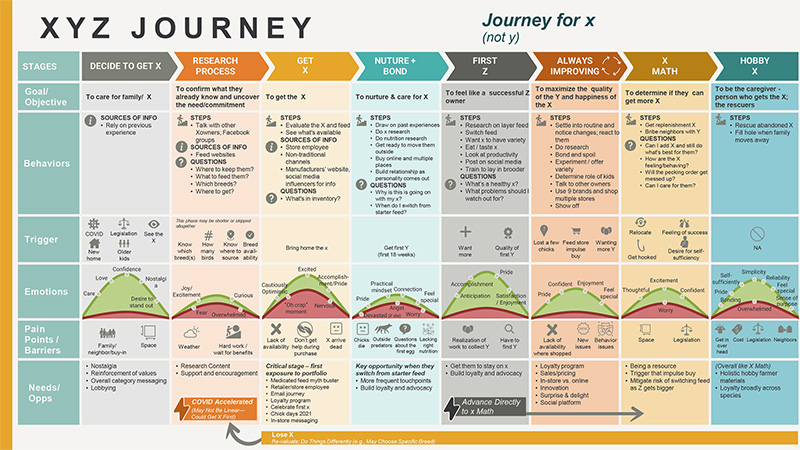
Journey Mapping – A Visual Way to Get Closer to Your Consumers and Their Needs
Filed Under: Shopper, Consumer Empathy
Kat Figatner
Senior Vice President, In-Person Qualitative Research
Journey Mapping has been getting a lot of buzz lately. At C+R, we’ve been seeing the frequency of requests for this type of project growing over the years from clients across all industries. But you may ask, “what is a journey map and what’s so special about it?”
A journey map visualizes the needs, actions, mindset, and emotions a customer experiences as they engage with a product, service, or brand.
- The scope of the journey may span across the entire lifespan of a customer’s experiences – from awareness, through consideration, purchase, and loyalty or abandonment.
- It may be tighter in scope – to hone-in on a specific type of interaction or experience, such as the consumer shopper journey or the onboarding or learning curve within the initial usage stage of the product or service post-purchase.
Often with a journey mapping project, the key component is the specific output of the research – a highly visualized and succinct 1-page map to represent the journey.
- This visualization tells the story tightly and clearly to help build empathy for your consumers, identify how to engage with them, and optimize their experiences at the various touchpoints throughout the journey.

At C+R, we have a framework for approaching journey mapping, but as a custom consumer and market insights firm, it’s not a black box solution. Instead, we work with our clients to craft the research program that meets their specific needs.
- Typically, we start with a qualitative exploration to identify and illuminate consumers’ different paths and steps throughout their journey.
- This qual approach, which may include digital assignments, live conversations, or a combination of both, allows us to probe and understand their emotional highs and lows through the process: understanding triggers, key points of influence, and frustrations and roadblocks along the way.
We typically have a good sense of the journey from the qual research and may transition from there into the mapping process, or we may pause to validate what we learned through a quantitative survey.

Example: Consumer Journey Map
Regardless, at the end of the research, we move onto the journey mapping phase of the initiative. This process typically involves two steps:
- First, we want to align regarding the contents on the map.
- We do this by holding an in-person workshop or series of virtual work sessions with the client team.
- We first prep a “strawman” or working draft of the map, then review each component in-depth with the client team.
- This collaboration allows us to add our client’s internal knowledge and previous consumer and market insights into the map, creating a more robust deliverable.
- We also use the time together to brainstorm on the implications and opportunities–what the client can do at each phase to address needs and pain points, and enhance their customers’ experiences.
- Then, once we have full alignment on the map’s content, we visualize it, leveraging the expertise of our in-house Storyologists.
- This process turns an otherwise boring grid into something more visually pleasing and easily digestible through graphics, icons, and other visual cues. This phase usually involves some back-and-forth collaboration to get the map’s look just right.
Sometimes the process ends there; other times, we go through it again, in a streamlined manner, if there are multiple maps to create based on different categories or consumer cohorts.
Journey mapping is a valuable final deliverable to sum up the consumer insights, and building one is useful to bring the client team closer to their consumers and their needs. Read how we helped our client understand the journey of the consumer sales consultant team in order to identify opportunities to support the consultants on their sales journey. Reach out to us at C+R if you want to learn more or see how we’d recommend tackling your consumer journey research mapping needs.
explore featured
Case studies

